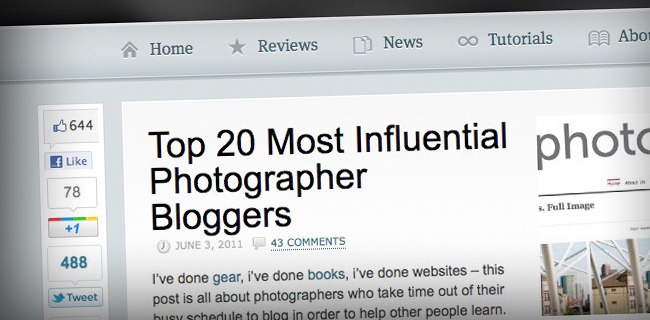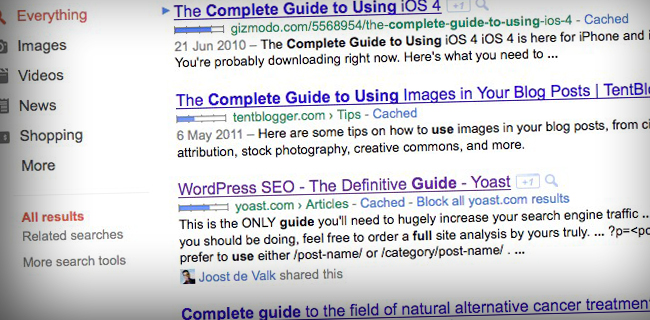1. Write something that everyone can follow.
Your first goal in creating a post that has the potential to go viral on social media is to make the content easily consumable by the largest audience possible. This means you need to cater to beginners, intermediate, and advanced level readers in your industry – all in the same post!
If your post is a tutorial, for example, you need to write it in a way that someone new to the process could get started easily with your directions while also including tips and tricks that people who are familiar with the process might not have learned yet.
Content that goes viral does so for a reason – because everyone who comes in contact with it loves it enough to keep the spread happening. Try to ensure that your content will touch base with every reader possible!
2. Make sure your post is complete.
You’ve seen them – the kinds of posts where, after you’ve read it, your next goal was to find out more information. You probably didn’t think to share the post – you just went in search of more details.
This is where the little 300 word, made for SEO posts generally fail. They’re generally too simplistic to the point that they don’t actually give the reader everything they need to be satisfied.
You want your post to be the full guide. You want it to answer everyone’s question before they even get a chance to ask it. You want it to be something that others will think of sharing when someone asks them about that topic. You want it to be memorable.
3. Bring a new concept to life, or tackle it from a different angle.
It’s tough, I know. Most industries are over saturated with content to the point that it doesn’t feel like there is anything new left to offer. But I assure you, there is.
Social media ROI is one of those topics. Everyone writes about it, or so it seems. I read through a lot of posts on the subject, and I came to the conclusion that most posts out there either said it was impossible to determine or only gave you half the steps to start measuring it.
So I wrote what I felt no one else had – a post on how to measure as much of it as you can using
Google Analytics. I also kept points #1 and #2 in mind, and voila – with some nice promotional (see
killer awesome post promotion process) in two weeks it amassed 1,100+ tweets, 500+ likes, 2,600+ stumbles, 350+ shares on LinkedIn, and at least 100 comments (not counting my author responses) which is not too shabby I’d say.
4. Focus on the network you are targeting.
What if your goal isn’t to have widespread social media coverage, but to do well on one particular social network? Maybe you just want a ton of tweets, a lot of shares, or simply to hit the front page of Digg or a similar network. The key in this case is to keep the above two tips in mind and write your post on that network.
If you enter a contest where the winner is based on the number of tweets, then your task is simple – write a great post on Twitter. Your goal, again, is to keep in mind previously mentioned points #1 – #3. If you have a post that everyone on Twitter can benefit from, that is thorough, and has some unique aspects to it, you can almost be certain that, with the right amount of promotion, that post will make retweet history!
5. Create a mega-list.
While there are definitely some list-haters out there, the consensus is that if you create an awesome list, you’re going to get a lot of awesome social shares. The key to lists, of course, is to make them unique and include lots of valuable information that others don’t.
When it comes to top blog lists, don’t just say “here’s 50 blogs I like” and list them in bullet points. Write a nice description of them, and even include a link to a few of their latest posts. The latter point is key – linking to a blogger’s latest posts will send many of them a trackback which alerts them to the fact they were listed. Sharing at that point takes care of itself – if you have 20 people in a list, most of them will be happy to spread the word that they’ve been recognized for their blogging accomplishments.
If your list doesn’t involve blog posts and track backs, your next goal once it goes live is to make sure everyone on the list knows about it. I prefer tagging people in a Facebook update, tweeting them, or emailing them, depending on our relationship. You can also do tweets like the following.
Check out the Top 10 Twitter Apps including @HootSuite @BufferApp @TweetDeck @CoTweet @Bitly http://bit.ly/q5u1Qr
These will alert individuals and/or brands to the fact that they have been listed so that they will hopefully give you some love from their social accounts as well. It’s a win for them as it shows their audience that others love writing about them, and a win for you because brands especially tend to have large audiences.
6. Publish on a site that is social-sharing friendly.
The last major key for having a socially viral post is to simply publish it on a site that is social share friendly. If that is your site, you must add social sharing buttons to your blog template, either through a
WordPress plugin, add-on like
Add This, or inserting the individual buttons into your
blog’s template files.
If you’re not posting your content on your own site, be sure that your target site has social sharing buttons. I publish on a wide range of sites, and the social sharing of those posts can be almost directly linked to the site’s chosen social sharing buttons. Posts I do on sites that only have
Twitter and
Facebook buttons only get tweets and likes, posts I do on sites with the
StumbleUpon button usually get stumbled, and posts on sites with no sharing buttons usually get minimal social shares (but those also tend to get a lot of comments, so there is a trade off).

7. Format your post beautifully.
Last, but not least, is the overall visual presentation of your blog post. If your post is just one big glob of text with no headers, it loses the scanability that readers (and especially social-sharers) love. If it’s on a site that is covered in ads (think the large, ugly Adsense ads below post headers), then people might not even make it to your content.
Just like people aren’t likely to share an ugly photograph (unless it’s a post about the top 10 ugliest animals in the world), they are just as unlikely to share an ugly post. Even if the site isn’t fancy, a clean layout that puts the emphasis on the content (where emphasis belongs) will help in ensuring more social shares for that content.
Source : http://www.incomediary.com/













